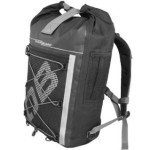Sponsored Post
Recently, there has been quite a lot of debate across various fields about why people who fly on airplanes are so prone to catching a cold. In the past few decades, aircrafts have been designed to recirculate about half of the cabin air to ensure that air travel becomes more fuel efficient. However, this particular aspect may or may not be the reason individuals catch colds after air travel, but it causes enough to trigger multiple authors and students to look into the concern.
Studies regarding this issue have shown that passengers that fly on aeroplanes directly have a more significant chance of getting the common cold. The reason for this may be unknown, but the connection of the common cold and flying in an aircraft is unmistakable. Keeping this undeniable reality in mind, here are ways in which a traveller can avoid catching an airplane cold:
1. Wash your hands

Just breathing germs in, is not enough to cause one to get ill. In most cases, it is easier for bacteria to spread when there is physical contact of two individuals (one being the vessel for the germs). In cramped spaces such as an airplane, making sure that one gets to enjoy their personal space may not be as easy as it sounds. For that very reason, and to ensure that the airplane cold is kept as far away as possible, it is recommended to wash hands as often as possible.
This often underrated step is one of the most essential ways in which pathogens and germs, which would otherwise make one unwell, can be kept away from the body and not allowed to cause sickness. If not soap and water, hand sanitizer must be carried with a traveller at all times to ensure that they can clean their hands after they come in contact with objects such as another individual’s seat, tray, or other belongings that might not be clean.
2. Disinfect the area
Whoever someone flys with, it is imperative that they use disinfectant wipes to clean the area they will sit in during the flight. This includes the seat, the belt, the tray, and any other surfaces they will come in contact with. This is especially true and necessary for individuals travelling with infants and children that tend to touch everything around them.
Apart from the fact that children have weaker immune systems, it is just generally unsafe for them to be in contact with such surfaces. Disinfectant wipes are portable and effective ways to ensure that germs that cause the common cold and other issues can be avoided. It is also advised to carry as many of one’s items as possible to best avoid having to touch and come in contact with the plane’s surfaces.
3. Choosing a seat

It is practically impossible to know if the plane one is travelling on has a passenger carrying a cold or its germs, but selecting a strategic seat can help avoid the risk of catching a cold irrespective of the other passengers on board. Studies conducted by various universities across the world have suggested that window seats have proven to be the most immune to germs and pathogens such as those that cause the common cold. The reason for this, in particular, is still unknown, but empirical data suggests that passengers in window seats are less likely to be taken ill with the common cold after a flight as opposed to other passengers.
4. Preparing the body
An important thing to do while preparing for travelling is to ensure that the body is ready as well. Travelling, especially via air, can often be extremely exhausting for the human body and it usually takes a long time for it to adjust as well. In the midst of this, the risk of catching an airplane cold is a risk one should not be taking at all.
To prepare the body to fight such viruses and pathogens, you can do a few simple things. The first of this is to ensure that the body is well rested before travel. This allows the body to fight off pathogens easily. The second is to ensure that the food consumed before air travel is not full of sugars and carbs that can weaken the immune system and make the body more lethargic and unresponsive to pathogens. According to studies, foods that are high in sugar can decrease the immune cells that fight pathogens.
The last way in which the body can be prepared before travel is by taking immune support supplements that help prevent sickness. Depending on the traveller’s immune system, this may or may not work as effectively as needed, which is why a doctor must be consulted.
5. Pack carefully

In the carry-on luggage, it is always safe and best to pack a mask that can help protect the traveller from airborne viruses and pathogens. This may not work for the entire duration of the flight, but can be an effective way to save oneself from the pathogens for as long as possible. Multiple masks can be packed for longer trips as well. If this seems like an option that might make the traveller seem odd in the eyes of other travellers, another option to do the same thing is to pack or wear a scarf.
This is a much more subtle version to shield the mouth and nose from airborne viruses and pathogens without letting other people know why someone is covering themselves up in such a manner. Experts at clickpharmacy.co.uk believe that airplane colds are prevalent but can easily be avoided. They are often a result of a sick individual being on board which can increase chances of other passengers getting sick as well. To best prevent an aeroplane cold, experts recommend following the steps mentioned above. If one is careful, there is no reason why aeroplane colds cannot be completely avoided.



